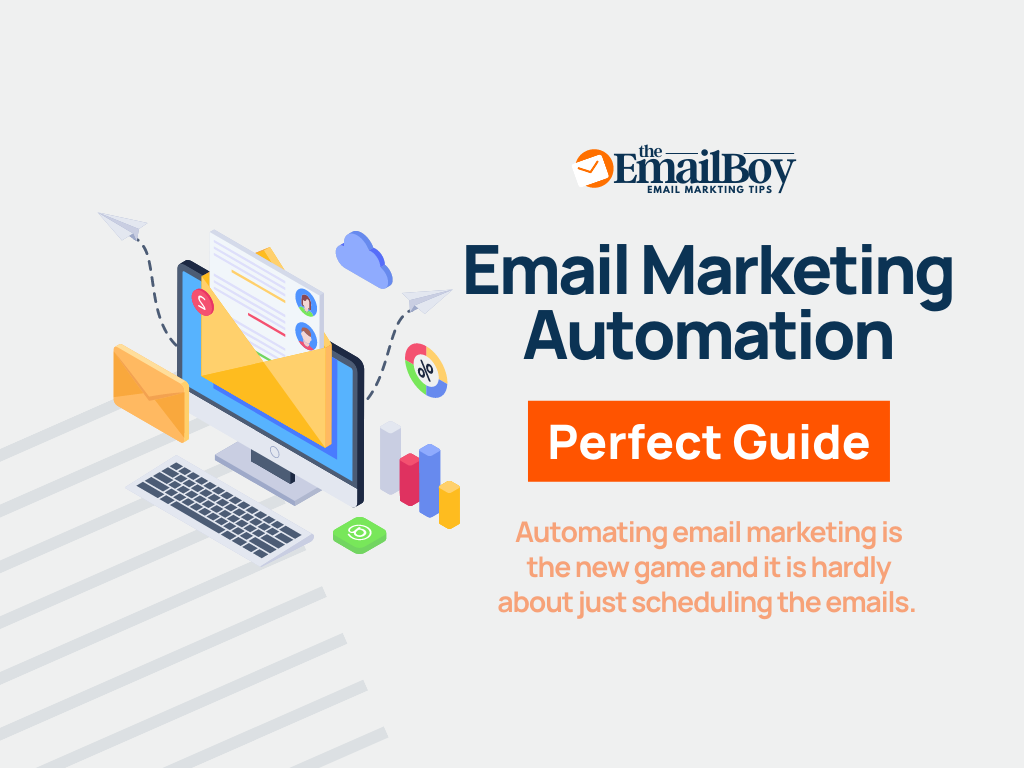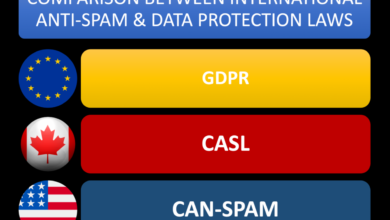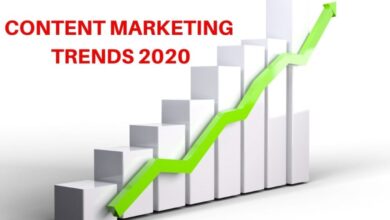
Email Marketing Automation Your WordPress Guide
Email marketing automation is revolutionizing how businesses connect with their audience. From welcome series to abandoned cart recovery, automated emails can nurture leads, boost sales, and streamline your marketing efforts. This guide dives deep into the world of email automation, offering practical strategies, actionable tips, and real-world examples to help you optimize your WordPress site for maximum impact.
We’ll explore everything from setting up automated welcome sequences to integrating email marketing with other marketing channels. You’ll learn how to segment your email list, craft compelling subject lines, and analyze campaign performance to maximize your return on investment. This comprehensive guide will be your ultimate resource for mastering email marketing automation within WordPress.
Introduction to Email Marketing Automation
Email marketing automation streamlines your communication with subscribers, significantly boosting efficiency and effectiveness. It’s a powerful tool that automates various email tasks, from welcome sequences to abandoned cart reminders, allowing businesses to nurture leads, build relationships, and drive conversions. Instead of sending individual emails manually, automation software handles the process, sending targeted messages at specific times or based on subscriber actions.Email marketing automation offers a multitude of advantages, including increased efficiency, targeted messaging, and enhanced customer engagement.
It empowers businesses to personalize communication, nurture leads, and ultimately boost their bottom line. By automating repetitive tasks, marketers can focus on higher-level strategies and achieving greater results.
Definition of Email Marketing Automation
Email marketing automation is a process that uses software to automatically send emails to subscribers based on predefined triggers and conditions. It eliminates the need for manual email sending, freeing up time and resources for other marketing activities. This technology leverages data to tailor messages to individual subscribers, increasing engagement and conversion rates.
Key Benefits of Implementing Email Marketing Automation
Email automation delivers significant benefits, including: improved efficiency and time savings, enhanced customer engagement through personalized messaging, increased sales and conversions, and the ability to track campaign performance. Automation allows for focused effort on strategic tasks, while freeing up time for more creative and strategic endeavors.
Different Types of Email Automation Workflows
Various workflows can be automated to achieve different marketing objectives. These include welcome series, abandoned cart recovery, post-purchase follow-ups, promotional campaigns, lead nurturing, and trigger-based emails. Each workflow serves a specific purpose in the overall marketing strategy.
Basic Email Automation Workflow Example: Welcome Series
A welcome series is a common automation workflow designed to onboard new subscribers. It involves a sequence of emails sent over a period of time, typically a few days or weeks, to introduce the brand, its products or services, and its value proposition. The welcome series can be customized to address specific customer needs and preferences, fostering a positive first impression and encouraging engagement.
- Email 1: Welcome email introducing the brand and its mission.
- Email 2: Email showcasing key products or services.
- Email 3: Email providing a discount or special offer to encourage immediate action.
- Email 4: Email highlighting helpful resources or tutorials.
This sequence aims to engage new subscribers and build brand loyalty from the outset.
Common Use Cases for Email Marketing Automation
Email automation is applicable in numerous situations. Examples include welcome series for new subscribers, abandoned cart recovery to recapture lost sales, post-purchase follow-ups to encourage repeat business, and promotional campaigns to drive sales. These diverse use cases highlight the flexibility and versatility of email marketing automation.
Comparison of Email Marketing Automation Platforms
| Feature | Platform A | Platform B | Platform C |
|---|---|---|---|
| Email Deliverability | Excellent (high deliverability rates) | Good (acceptable deliverability rates) | Average (potential for lower deliverability) |
| Pricing | Starts at $25/month | Starts at $50/month | Starts at $100/month |
| Ease of Use | Very easy (intuitive interface) | Easy (requires some learning curve) | Moderate (steeper learning curve) |
| Features | Comprehensive (many features for complex workflows) | Good (suitable for medium-sized businesses) | Basic (suitable for smaller businesses) |
This table provides a brief overview of three different email marketing automation platforms, highlighting key features, pricing, and ease of use. Each platform has its own strengths and weaknesses, and the best choice depends on individual business needs and resources.
Strategies for Effective Email Automation
Email automation is no longer a luxury but a necessity for businesses seeking to maximize their marketing ROI. By automating repetitive tasks and tailoring communication to individual customer needs, businesses can significantly boost engagement and drive conversions. This approach fosters a more personalized and efficient customer journey.Email automation empowers businesses to nurture leads, provide timely support, and ultimately, build stronger customer relationships.
The key lies in understanding and implementing effective strategies that go beyond simple automation and tap into the potential of personalized communication.
Segmenting Email Lists for Personalized Campaigns
Effective email campaigns require segmentation to deliver tailored messages. Categorizing subscribers based on demographics, purchase history, website activity, or engagement levels allows for highly targeted communications. This personalization fosters stronger connections with customers and significantly improves open and click-through rates. For example, a company selling outdoor gear can segment subscribers into categories like hikers, campers, or fishermen.
This allows for targeted promotions for each segment.
Importance of A/B Testing Email Campaigns
A/B testing is crucial for optimizing email campaigns. By comparing different subject lines, email content, or call-to-actions, businesses can identify what resonates best with their audience. This iterative process leads to higher engagement and improved conversion rates. For instance, testing different subject lines can reveal which ones elicit the highest open rates.
Examples of Email Automation Triggers
Automation triggers are crucial for delivering timely and relevant messages. Abandoned cart emails, welcome sequences, post-purchase follow-ups, and birthday messages are effective examples of triggers. These automated messages can significantly increase conversion rates by reminding customers of abandoned items, fostering engagement, and offering personalized follow-up. For example, an online retailer can send an automated email to customers who have abandoned items in their cart, reminding them of the items and offering incentives to complete the purchase.
Best Practices for Crafting Compelling Email Subject Lines
Compelling subject lines are paramount for high open rates. Subject lines should be concise, engaging, and relevant to the content of the email. They should clearly communicate the value proposition and pique the recipient’s curiosity. Consider using a sense of urgency or a personalized touch to increase the likelihood of opening the email. For example, a subject line like “Don’t miss out on our limited-time offer!” can create a sense of urgency.
Personalization in Email Marketing Automation
Personalization is paramount in email automation. Using subscriber data to tailor email content and offers significantly enhances engagement. Personalization goes beyond just addressing recipients by name; it involves tailoring the entire email experience to the individual’s specific needs and preferences. This personalized approach significantly increases open and click-through rates. For example, recommending products based on past purchases is a powerful personalization technique.
Tracking and Analyzing Email Marketing Campaign Performance
Tracking and analyzing campaign performance is essential for optimizing future strategies. Key metrics, such as open rates, click-through rates, conversion rates, and unsubscribe rates, provide insights into campaign effectiveness. Regular monitoring and analysis enable businesses to make data-driven decisions and fine-tune their email campaigns.
Metrics to Track for Email Automation Campaigns
| Metric | Description | Importance |
|---|---|---|
| Open Rate | Percentage of recipients who opened the email. | Indicates the effectiveness of the subject line and sender reputation. |
| Click-Through Rate (CTR) | Percentage of recipients who clicked on a link within the email. | Measures the engagement with the email content and calls-to-action. |
| Conversion Rate | Percentage of recipients who completed a desired action (e.g., making a purchase). | Indicates the effectiveness of the email campaign in driving conversions. |
| Bounce Rate | Percentage of emails that were not delivered. | Indicates potential issues with email addresses or server configurations. |
| Unsubscribe Rate | Percentage of recipients who unsubscribed from the email list. | Reflects customer satisfaction and the relevance of the email content. |
| Spam Complaints | Percentage of recipients who marked the email as spam. | Indicates issues with the email content or sender reputation, potentially impacting deliverability. |
Building Email Automation Workflows

Email automation isn’t just about sending emails; it’s about creating personalized experiences for your subscribers. By setting up automated workflows, you can nurture leads, drive sales, and improve customer retention, all while freeing up your time for other crucial tasks. This crucial aspect of email marketing allows businesses to scale their outreach and engagement.Automated workflows streamline your email marketing efforts, ensuring consistent communication and tailored interactions with your audience.
This approach allows you to connect with your subscribers at the right time and with the right message, ultimately increasing conversion rates and fostering stronger customer relationships.
Setting Up an Automated Welcome Series
A welcome series is a critical component of any email automation strategy. It establishes a positive first impression and introduces your brand to new subscribers. The welcome series should guide new subscribers through your product or service. It sets the stage for future engagement and should include valuable content that resonates with the target audience.
Creating Email Sequences Based on Customer Behavior
Customer behavior provides invaluable insights for crafting targeted email sequences. Segmenting your audience based on their interactions with your website or app, purchase history, or engagement with previous emails, enables you to deliver relevant content at each stage of their journey. By understanding their preferences, you can personalize their experience, making them more receptive to your messages.
Examples of Automated Email Campaigns
Several automated campaigns can significantly impact customer engagement and drive conversions. For instance, abandoned cart emails gently remind customers of items left behind, encouraging them to complete their purchase. Post-purchase follow-ups can gather feedback, recommend related products, or provide support. These examples demonstrate the power of automation to engage customers at key touchpoints.
Importance of Email Automation for Lead Nurturing
Lead nurturing is a cornerstone of successful sales and marketing. Automated emails can nurture leads by providing valuable content, answering questions, and building relationships. By providing consistent engagement through targeted emails, you move leads closer to conversion. This process can significantly improve conversion rates by educating and supporting leads as they make their purchasing decision.
Step-by-Step Guide for Building an Automated Email Workflow
1. Define your goals
What do you want to achieve with this workflow? Increased sales, lead generation, or customer retention?
2. Identify your audience segments
Who are you targeting? What are their needs and interests?
3. Choose your trigger
What event should initiate the workflow? A new signup, abandoned cart, or a specific purchase?
4. Create your email sequence
Develop a series of emails designed to guide the recipient toward your goal.
5. Test and refine
Monitor the performance of your workflow and adjust as needed.
Transactional Email Template (Order Confirmation)
Subject: Your Order Confirmation (Order # [Order Number]) Dear [Customer Name], Thank you for your order! This email confirms your recent order from [Your Company Name]. Your order number is [Order Number]. Order Details: | Item | Description | Quantity | Price | |---|---|---|---| | [Item 1] | [Description 1] | [Quantity 1] | $[Price 1] | | [Item 2] | [Description 2] | [Quantity 2] | $[Price 2] | | ...| ... | ... | ... | Total: $[Total Price] Shipping Address: [Shipping Address] Payment Method: [Payment Method] Estimated Delivery: [Estimated Delivery Date] You can view your order details and track its progress at [Link to Order Tracking Page]. If you have any questions, please contact us at [Support Email Address] or [Phone Number]. Sincerely, The [Your Company Name] Team
Email Automation Tools
| Tool | Best for |
|---|---|
| Mailchimp | Small to medium-sized businesses needing comprehensive email marketing features. |
| HubSpot | Businesses focused on inbound marketing and customer relationship management. |
| ActiveCampaign | Businesses prioritizing advanced automation and personalization. |
| Sendinblue | Businesses looking for an affordable and user-friendly solution for email marketing and automation. |
Integration and Optimization
Email marketing automation isn’t a standalone effort.
To maximize its impact, you need to seamlessly integrate it with other marketing channels. This holistic approach creates a unified customer experience and amplifies the effectiveness of your campaigns. Furthermore, optimization is crucial to ensure your automated emails resonate with your audience and deliver the desired results.
Effective automation requires a strategic approach, including mobile optimization, compelling content, and adherence to regulations. This ensures high open and click-through rates, and protects your brand’s reputation. A well-integrated and optimized system can significantly boost your marketing ROI.
Integrating with Other Marketing Channels
Integrating email automation with other marketing channels, such as social media and paid advertising, is essential for a cohesive customer journey. This synchronization allows for a unified message and creates a more personalized experience. For example, a user who clicks on a social media ad can be automatically added to a targeted email list for follow-up. Similarly, you can use data collected from website forms to segment your email list and send tailored promotions.
Mobile Optimization for Email Campaigns
Mobile optimization is paramount. A significant portion of your audience accesses emails primarily through their smartphones or tablets. Responsive email design ensures a seamless experience across all devices, maximizing readability and click-through rates. Critically, the layout and visual elements should adapt dynamically to different screen sizes.
Strategies for Improving Open and Click-Through Rates
Compelling subject lines, personalized content, and clear calls to action are key to boosting email engagement. A subject line should be concise and relevant to the email content. Segmentation, where you divide your email list into smaller groups based on shared characteristics, allows for more targeted messaging, which increases the likelihood of a user opening and engaging with the email.
Email marketing automation is a game-changer for boosting engagement, but to really maximize results, you need a multi-faceted approach. Think about complementing your automated email sequences with targeted Facebook ads, like using facebook retargeting to re-engage those who haven’t converted yet. This targeted approach ensures your emails resonate with the right people at the right time, driving better results overall in your email marketing automation strategy.
Complying with Email Marketing Regulations
Adherence to email marketing regulations like CAN-SPAM is critical for maintaining a positive sender reputation and avoiding penalties. This includes obtaining explicit consent from recipients before sending emails and providing an easy unsubscribe mechanism. Always ensure your emails are compliant to avoid legal issues.
Email marketing automation is super helpful, but understanding the data behind it is key. Recent news about article structured data, like in breaking news what is article structured data and how to test it , shows how crucial this is for analyzing campaign performance. This data can reveal patterns and trends in your audience engagement, which in turn, can significantly improve your email marketing automation strategy.
Using Dynamic Content in Email Automation
Dynamic content, which adapts to individual recipient information, creates highly personalized experiences. For example, if a customer has a birthday, an automated email can wish them a happy birthday and offer a special discount. Other instances include using dynamic product recommendations based on past purchases.
Email List Hygiene
Maintaining a healthy email list is crucial for optimal email campaign performance. Removing inactive or unsubscribed users, and unsubscribing those who have not interacted with your emails, is vital. This practice reduces bounce rates, improves deliverability, and prevents your email from being flagged as spam. A clean email list enhances your sender reputation and improves the overall effectiveness of your campaigns.
Examples of Email Marketing Automation Platform Integrations
| Platform | Integrations | Benefits |
|---|---|---|
| Mailchimp | Shopify, Facebook, Google Analytics | Streamlined customer journeys, enhanced reporting, and data-driven insights. |
| ActiveCampaign | Zapier, WooCommerce, Salesforce | Increased efficiency, personalized marketing, and improved customer relationship management. |
| Constant Contact | WordPress, WooCommerce, SurveyMonkey | Effortless integration, robust analytics, and scalable automation. |
Advanced Techniques
Email automation is no longer just about sending pre-scheduled messages. Modern strategies leverage advanced techniques to create hyper-personalized experiences and optimize campaign performance. This involves delving into predictive analytics, machine learning, and sophisticated segmentation to drive meaningful engagement and measurable ROI.
Predictive analytics, for instance, allows marketers to anticipate customer behavior and tailor email content accordingly. By analyzing past data, trends, and patterns, businesses can forecast future actions and tailor campaigns to resonate more effectively. This leads to higher open rates, click-through rates, and ultimately, conversions.
Predictive Analytics in Email Automation
Predictive analytics in email automation involves using historical data to forecast future customer behavior. This allows marketers to anticipate customer needs and tailor emails accordingly. For example, if a customer frequently purchases specific products, an email predicting a potential need for a complementary item or a seasonal promotion can increase engagement. Sophisticated algorithms analyze purchase history, browsing behavior, and demographic information to predict future purchases.
This results in more targeted and relevant email campaigns, improving conversion rates.
Machine Learning in Email Marketing
Machine learning algorithms are transforming email marketing by personalizing content and improving campaign performance. These algorithms can analyze vast amounts of data to identify patterns and predict customer behavior, enabling highly personalized email campaigns. Machine learning can segment customers into precise groups, enabling the delivery of highly tailored content. For example, an e-commerce company can use machine learning to recommend products based on individual customer preferences and browsing history.
This leads to higher customer satisfaction and increased sales.
Personalized Recommendations in Email Campaigns
Personalized recommendations are crucial for driving engagement and conversions. They involve using data to suggest relevant products or content to individual customers. This can be achieved through algorithms that analyze past purchases, browsing history, and demographics. For example, an online retailer could send an email suggesting related products to a customer who recently purchased a specific item, thereby increasing the likelihood of a follow-up purchase.
A/B Testing Email Subject Lines
A/B testing email subject lines is essential for optimizing campaign performance. By testing different subject lines, marketers can determine which ones resonate most with their target audience. This iterative process improves open rates and ultimately, conversion rates. For instance, a retailer could test variations of subject lines, such as using different tones, highlighting special offers, or incorporating urgency, to determine which generates the highest open rates.
Advanced Segmentation Strategies for Personalized Experiences
Advanced segmentation strategies are critical for crafting personalized experiences. Beyond basic demographics, marketers can use behavioral data, purchase history, and engagement metrics to create highly targeted segments. For example, a travel agency could segment customers based on their travel preferences, destination choices, and past bookings to deliver tailored offers.
Email marketing automation is a game-changer for boosting engagement, but it takes a strategic approach. Recently, I was inspired by Cheryl Gresham, Head of Marketing at TikTok, who was named Ignite Marketer of the Week here. Her focus on personalized content and dynamic segmentation clearly demonstrates how email automation can deliver impressive results. Ultimately, understanding these strategies is key to making email marketing automation work effectively for any business.
Measuring and Analyzing Email Automation ROI, Email marketing automation
Measuring and analyzing the return on investment (ROI) of email automation is crucial for demonstrating its effectiveness. This involves tracking key metrics such as open rates, click-through rates, conversion rates, and customer lifetime value. Tracking these metrics allows businesses to optimize their strategies and allocate resources effectively. For example, a company can monitor which campaigns are performing best and adjust their strategies based on the data.
Comparison of Email Automation Strategies
| Strategy | Advantages | Disadvantages |
|---|---|---|
| Triggered Emails | High personalization, timely delivery, increased engagement. | Requires careful setup and monitoring, potentially high initial investment. |
| Automated Workflows | Scalability, efficiency, consistent messaging. | Can be less personalized, requires complex setup, potential for generic messaging. |
| Behavioral Email Automation | High personalization based on actions, increased engagement. | Requires significant data collection and analysis, potential for over-targeting. |
| Predictive Email Automation | Highly personalized predictions, enhanced customer experience. | Complex algorithms, reliance on accurate data, potentially higher risk of miscalculation. |
Measuring and Analyzing Results: Email Marketing Automation

Email marketing automation isn’t just about setting up workflows; it’s about understanding what works and what doesn’t. Effective analysis of your automation campaigns allows you to fine-tune strategies, boost engagement, and ultimately, achieve better ROI. This crucial step involves measuring key performance indicators (KPIs), interpreting data, and using insights to optimize your future campaigns.
Thorough data analysis is essential for understanding the effectiveness of your email automation efforts. This process allows you to pinpoint what’s resonating with your audience and what needs adjustment. By carefully monitoring and interpreting key metrics, you can optimize your campaigns for better engagement and conversions.
Email Metrics for Success
Understanding the metrics that matter is paramount to measuring email automation success. Key metrics provide quantifiable insights into the effectiveness of your automation strategies. These insights will ultimately allow you to refine your approach and improve results. Open rates, click-through rates, and conversion rates are vital indicators.
Tracking Key Metrics
Open rates, click-through rates, and conversion rates are critical to monitoring email automation success. Tracking these metrics allows you to assess the impact of your campaigns. Tools within email marketing platforms offer detailed reporting on these metrics.
- Open Rates: This metric measures the percentage of recipients who opened your automated emails. High open rates indicate your subject lines are engaging and your content is relevant. A high open rate suggests your recipients are interested in the content of your emails, and that your subject lines and pre-headers are effectively grabbing their attention.
- Click-Through Rates (CTR): This metric reveals the percentage of recipients who clicked on a link within your automated emails. A high CTR indicates that your email content is compelling and encouraging recipients to take action. A low CTR could point to a need to refine your call-to-actions, content relevance, or email design.
- Conversion Rates: This metric measures the percentage of recipients who completed a desired action, such as making a purchase or signing up for a webinar, after clicking a link in your automated emails. Conversion rates reflect the effectiveness of your calls to action and the overall value proposition of your emails.
Analyzing Campaign Data for Optimization
Examining campaign data allows you to pinpoint areas needing improvement. Understanding what aspects of your automation are working and which ones are not is critical for optimization. By meticulously analyzing campaign data, you can make informed decisions to improve your email automation strategies.
- Segment Performance: Analyze how different segments of your audience respond to different email automations. If certain segments consistently exhibit higher engagement, understand why, and replicate those successful approaches with other segments. If other segments demonstrate lower engagement, analyze their characteristics and consider refining the email automation strategies to better resonate with their needs.
- Time of Day Analysis: Determine the optimal times to send emails based on when recipients are most active. Monitor open and click-through rates across different sending times to identify the peak periods for engagement. This analysis is crucial to maximize the impact of your automated campaigns by delivering emails when recipients are most likely to interact with them.
- Content Performance: Analyze which email content elements resonate most with your audience. Examine the subject lines, pre-headers, body copy, and calls to action that drive the highest open, click-through, and conversion rates. This analysis helps you refine your email content to create more engaging and effective communications.
Creating Email Automation Performance Reports
Creating reports is a vital part of analyzing your email automation efforts. These reports are crucial for demonstrating the effectiveness of your automation campaigns to stakeholders and justifying investments.
- Visual Representation: Use charts and graphs to visually represent key metrics like open rates, click-through rates, and conversion rates. Visualizations help to quickly identify trends and patterns. A well-designed report with charts and graphs can be a powerful tool for communication and understanding the impact of your automation campaigns.
- Regular Reporting: Schedule regular reporting on your email automation performance. Weekly or monthly reports will allow you to track progress and identify areas needing attention promptly. Regular reporting provides a clear overview of your automation campaign performance, allowing you to quickly identify areas needing attention.
- Key Metrics Summary: Include a concise summary of key metrics and their trends. The summary should highlight important findings and areas requiring further investigation or optimization. This concise summary helps stakeholders quickly understand the overall performance of the campaigns.
Using Analytics Tools for Improvement
Utilizing analytics tools is key to identifying areas for improvement in your email automation strategy. These tools provide comprehensive data on campaign performance, allowing for informed decisions.
- Identify Underperforming Campaigns: Use data analysis to pinpoint campaigns that are not performing as expected. By identifying these campaigns, you can understand the reasons behind the underperformance. This analysis can reveal factors such as subject line ineffectiveness, irrelevant content, or ineffective call-to-actions, which can then be addressed to improve campaign performance.
- Track Campaign Effectiveness: Use analytics tools to track the effectiveness of different email automation strategies. This includes monitoring the impact of segmentations, timing, and different content types on various KPIs. Monitoring the effectiveness of different automation strategies provides valuable data to support your future decisions and helps you understand what approaches work best with your audience.
Actionable Insights from Email Automation Data
Actionable insights are derived from email automation data and lead to improved campaign performance. These insights provide direction for future campaign optimization and increased engagement.
- Refine Subject Lines: If open rates are low, adjust subject lines to better capture attention and reflect the email content. Use A/B testing to experiment with different subject lines and identify those that perform best.
- Optimize Content: Analyze click-through rates to identify areas where content can be more compelling. Improve calls-to-action, make content more relevant, or streamline the user experience to encourage more clicks and conversions.
- Refine Timing: Identify optimal times for sending emails based on recipient engagement patterns. Schedule emails when recipients are most active to maximize open and click-through rates.
Visualizing Email Automation Data
Visualizations enhance understanding of email automation data. Presenting data visually makes it easier to identify trends and patterns.
- Charts and Graphs: Use charts like bar graphs, line graphs, and pie charts to visualize metrics like open rates, click-through rates, and conversion rates. These visual representations make trends and patterns more readily apparent.
- Dashboards: Create dashboards that display key email automation metrics in a single view. These dashboards allow you to track progress and identify areas for improvement. Dashboard visualizations consolidate essential data from different sources, providing a clear overview of email campaign performance.
Final Review
In conclusion, email marketing automation is a powerful tool for any WordPress-based business. By understanding the strategies, workflows, and integrations, you can create personalized, targeted campaigns that nurture leads and drive conversions. This guide equips you with the knowledge to master email marketing automation and unlock its full potential, leading to a more efficient and effective marketing strategy for your WordPress site.





